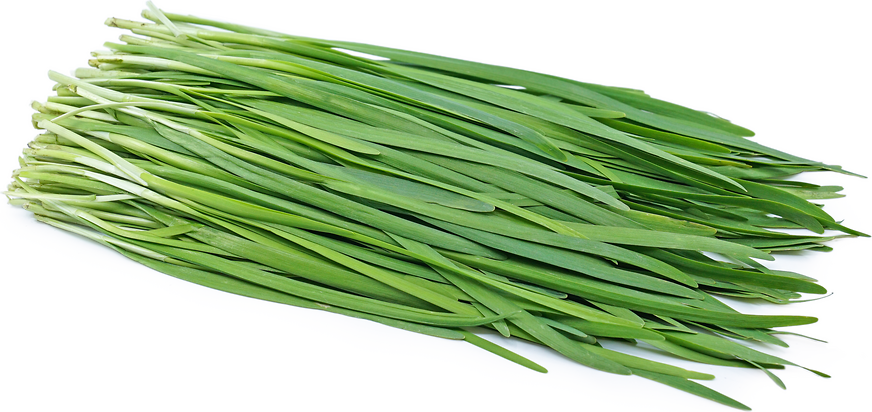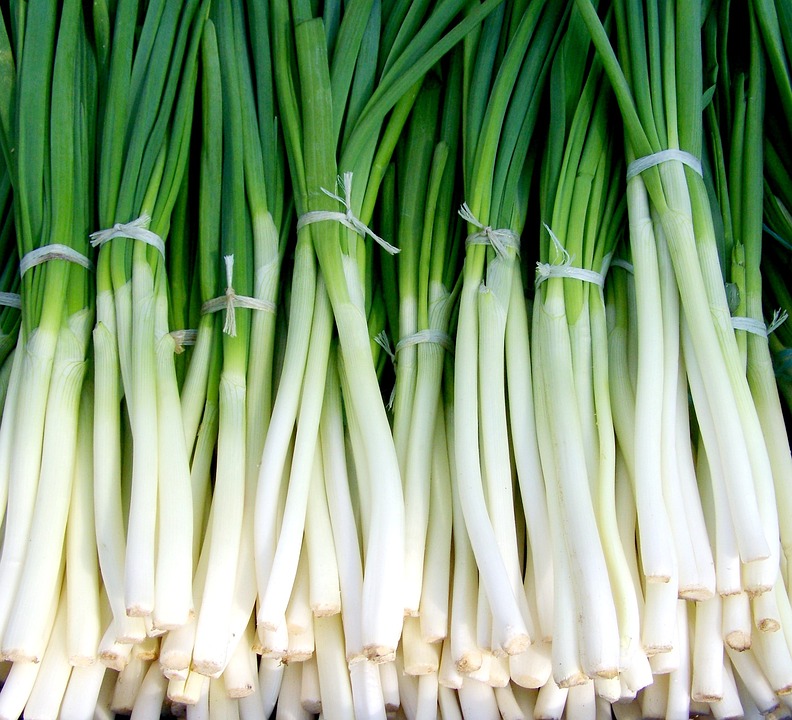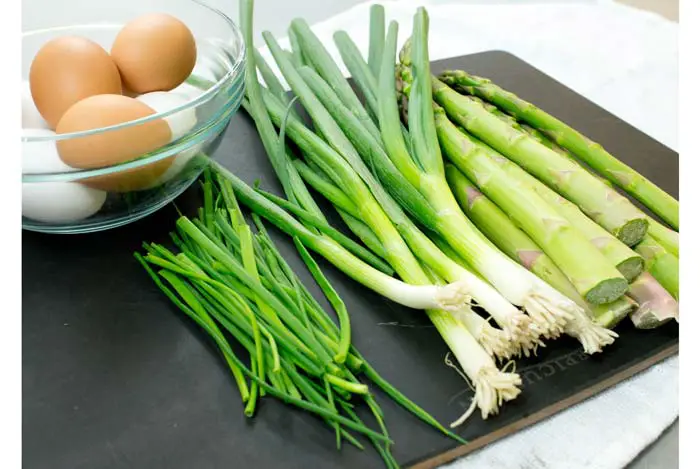If you’re a fan of cooking or garden fresh veggies, you may be familiar with chives and green onions. Both herbs are versatile and easy to grow, though they do have some subtle differences that can make picking out which one to use in your next dish a tricky decision. In this blog post, we’ll take a closer look at the similarities and differences between these two amazing herbs so that you can make an informed decision when choosing which one will work best for your recipe!
What Is a Chive?

Chives are a member of the onion family, but they have a milder flavor than other members like onions or garlic. They have hollow green stems and leaves that can reach up to 8 inches in length. Chives have a light onion-like taste and are commonly used to add flavor to salads,eggs, potatoes, fish dishes, cream sauces, etc.
Chives Nutrition Facts:
– Calories: 27 calories per serving
– Protein: 2.2g of protein per serving
– Fat: 0.4g of fat per serving
– Carbohydrates: 4.7g of carbohydrates per serving
– Fiber: 1.6g of fiber per serving
– Vitamin A: 41% of the RDI for vitamin A
– Vitamin C: 14% of the RDI for vitamin C
– Calcium: 7% of the RDI for calcium
– Iron: 3% of the RDI for iron
– Potassium: 6%of the RDI for potassium
Chives are a low calorie and nutrient dense food, providing a good source of vitamins and minerals in addition to fiber. They are an especially rich source of vitamin A and vitamin C, two powerful antioxidants that help protect the body from free radical damage. Chives also provide a good amount of calcium and iron as well as other minerals such as potassium. Eating chives can be a great way to get your daily dose of essential vitamins and minerals while still keeping calories low.
What Is a Green Onion?

Green onions (also known as scallions) are also part of the onion family. Unlike chives however, their stems and leaves remain solid and contain multiple layers rather than just one hollow layer like chives do. The green portion of the stem is edible and has a milder flavor than regular yellow onions. Green onions are commonly used in salads,soups and stir-fried dishes.
Green Onions Nutrition Facts:
– Calories: 32 calories per serving
– Protein: 1.3g of protein per serving
– Fat: 0.2g of fat per serving
– Carbohydrates: 6.4g of carbohydrates per serving
– Fiber: 2.1g of fiber per serving
– Vitamin A: 25% of the RDI for vitamin A
– Vitamin C: 29% of the RDI for vitamin C
– Calcium: 5% of the RDI for calcium
– Iron: 4% of the RDI for iron
– Potassium: 8%of the RDI for potassium
Green onions are a low calorie and nutrient dense food, providing a good source of vitamins and minerals in addition to fiber. They are an especially rich source of vitamin A and vitamin C, two powerful antioxidants that help protect the body from free radical damage. Green onions also provide a good amount of calcium and iron as well as other minerals such as potassium. Eating green onions can be a great way to get your daily dose of essential vitamins and minerals while still keeping calories low. Additionally, their high fiber content makes them a great choice for those looking to add more fiber into their diet.
What is the difference between Chives and Green Onions

The main differences between these two amazing herbs is their texture. As we mentioned earlier, chives are hollow whereas green onions are solid all the way through. Furthermore, when eaten raw, chives tend to be more potent than green onions because of the additional layer of flavor that comes from the hollow leaves.
Chives also tend to have a longer shelf life than green onions due to their dried and frozen form being available in stores year-round. However, since they don’t keep as well as green onions, you may want to consider keeping them in an airtight container in your refrigerator if you plan on storing them for long periods of time.
6 Differences between Chives and Green Onions:
1. Texture: Chives are hollow while green onions are solid
2. Flavor: Chives tend to be more potent than green onions
3. Shelf Life: Chives have a longer shelf life due to their dried and frozen form being available in stores year-round
4. Nutritional Content: Both chives and green onions provide a good source of vitamins and minerals such as vitamin A, vitamin C, calcium and iron
5. Uses: Chives can be used in salads, eggs dishes, cream sauces etc., while green onions are commonly used in salads, soups and stir-fried dishes
6. Storage: Chives should be stored in an airtight container in the refrigerator for long periods of time whereas green onions tend to keep better when stored in the refrigerator.
Similarities between Chives and Green Onions
Although they come from different branches of the onion family, chives and green onions have quite a few similarities. Both herbs have hollow leaves and stems that can be used in cooking, and their flavors are somewhat similar; both contain some level of sweetness and mild flavor without too much pungency. Additionally, both herbs are easy to grow in small pots or gardens as long as they get enough sunlight and moisture.
Are Green Onions and Chives the same thing?
No, green onions and chives are not the same thing. While they are both members of the onion family, green onions and chives have different textures, flavors, nutritional content and uses. Green onions are solid all the way through with a milder flavor than regular yellow onions. Chives on the other hand, tend to be more pungent than green onions due to their hollow leaves and stems.
Additionally, chives can be used in salads and egg dishes while green onions are commonly used in salads, soups and stir-fried dishes. Therefore, while they may look alike they are two distinct herbs with unique properties that offer a variety of culinary possibilities.
Can You Substitute Chives for Green Onions?
In some cases, it is possible to substitute chives for green onions; however it depends on the dish. For example, if a recipe calls for green onions as a garnish or topping, then you can use chives instead as they will both provide a mild onion flavor and bright color. In recipes such as salads that require sliced green onions, however, chives may not be an ideal substitution.
Furthermore, since chives are more pungent than green onions, you may need to adjust the amount used when substituting them in order to achieve the desired flavor. Ultimately, the best way to decide which herb is right for your dish is by tasting and adjusting accordingly until you find the perfect balance of flavor and texture.
How To Regrow Green Onions And Chives
Green onions and chives are easy to regrow from the base of their stalks. To regrow green onions, simply cut off the ends of the stalk and place them in a vase or container filled with shallow water. Place the container in direct sunlight and change the water every other day until new leaves begin to sprout.
To regrow chives, cut off 1-2 inch pieces at the bottom of the stalks and plant them in a pot filled with soil. Keep the soil moist and within a few weeks you should see new growth emerging from the roots. With some patience, you can enjoy fresh green onions or chives year round!
How To Store Chives And Green Onions
Chives should be stored in an airtight container in the refrigerator for long periods of time whereas green onions tend to keep better when stored in the refrigerator. For chives, you’ll want to remove any wilted leaves and give them a thorough rinse before storing them. To store green onions, cut off the roots and any wilted tops, then wrap the stalks tightly in a damp paper towel. Place the wrapped onions in your crisper drawer for up to two weeks. Both herbs will last longest when stored properly!
Chives vs Green Onions: Which is Healthier?
When it comes to nutrition, chives and green onions are both excellent sources of vitamins A, C and K as well as minerals such as iron and calcium. They both contain cancer-fighting compounds that help protect against oxidative damage. However, chives are slightly higher in nutrients than green onions; they have more vitamin C, beta carotene and calcium per serving. Additionally, the pungency of chives may also offer some digestive benefits due to their high content of volatile oils and antioxidants.
While there are a few nutritional differences between these two herbs, they’re both considered healthy additions to your diet. The best way to get the most out of them is to enjoy them fresh – either grown at home or purchased from the market.
FAQs: Chives vs Green Onions
What is the difference between chives and green onions?
Chives are a member of the Allium family and have hollow leaves while green onions have solid stems. Also, green onions tend to be milder in flavor than chives which are more pungent.
What is a better substitute for chives?
If you don’t have chives, some possible substitutes include finely chopped green onions or garlic scapes. If a recipe calls for dried chives, then you can use a blend of dried parsley, tarragon and thyme to create a comparable flavor. Additionally, if you are looking for an alternative to the onion-like flavor that chives provide, then shallots or leeks may be suitable replacements. However, it’s important to keep in mind that none of these substitutes will exactly mimic the flavor of fresh chives. Experimenting with different combinations is the best way to find a suitable substitute for your dish.
Chives vs green onions vs scallions:
Chives, green onions, and scallions are all members of the Allium family. The main difference between these three is their size and flavor. Chives are the smallest of the three, with thin hollow leaves and a strong onion-like flavor. Green onions have larger bulbs that tend to be milder in taste than chives. Scallions, or spring onions, are slightly larger than green onions but still much smaller than regular onions. They also have a milder onion-like flavor compared to other Alliums like garlic and leeks.
Chives vs green onions flavor:
Chives and green onions both have an onion-like flavor, but chives are more pungent than green onions. Chives also tend to be a bit more bitter than green onions. That being said, it really depends on the dish you’re making as to which herb will provide the right amount of flavor.
Green onions vs chives on baked potato
Baked potatoes are a classic side dish that can be easily jazzed up with the addition of chives or green onions. If you’re looking for an onion-like flavor without overpowering your potato, then go with green onions. These will provide subtle hints of onion without making your potato too sharp tasting. Chives on the other hand, will give you more of a punchy onion flavor – perfect if you want something a bit bolder! Both herbs taste great when combined with butter and some freshly cracked black pepper on top.
Leeks vs green onion vs chives vs scallions:
Leeks, green onions, chives, and scallions are all members of the Allium family. They each have a unique flavor profile with varying degrees of mildness or pungency. Leeks tend to be the most mild-tasting of the bunch, while chives have a more pronounced onion-like flavor. Green onions also provide hints of onion but are slightly less pungent than chives. Lastly, scallions (or spring onions) are more likely to add heat and spice compared to leeks and green onions.
Chives vs green onions in soup:
Chives and green onions can both be used in soup, and the choice really depends on your personal preference. Chives will give you more of a sharp onion flavor, while green onions will provide a milder taste. Additionally, chives are best used as a garnish for soups since they don’t break down when cooked. Green onions do better when cooked for longer periods of time, as the flavor mellows out during cooking.
Conclusion
Chives and green onions are two amazing herbs that are both incredibly versatile and easy to grow. While their flavors are similar, there are some key differences between these two herbs that make them each unique in their own way. So next time you’re looking for the perfect herb to add extra flavor and texture to your dish, consider the subtle differences between chives and green onions so that you can make an informed decision!
References:

James Burney is the founder of Acadia House Provisions is a restaurant that with local & upscale dishes and high-quality kitchen supplies and food products. James was born and raised in Maine, and he has always been passionate about cooking. After working in a number of prestigious restaurants he started Acadiahouseprovisions.com with the goal develop into a comprehensive information site specializing in cooking and cuisine. His goal is to make it easy for people to cook delicious meals at home without spending a fortune.
